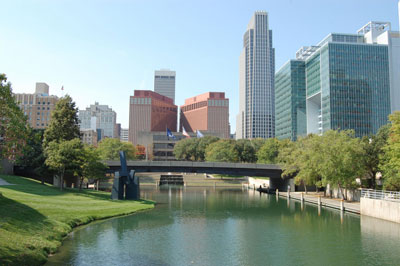Around the Water Cooler: New interactive technology helps solve aging infrastructure issues
By Lahne Mattas-Curry
 Cold weather brings many things: warm sweaters, hot chocolate, football and, unfortunately, water main breaks. Each year there are approximately 240,000 water main breaks across the United States. Many of these breaks are due to aging water infrastructure. According to EPA physical scientist, Michael Royer, “drinking water and wastewater infrastructure has been in a gradual state of decline for the past two decades.”
Cold weather brings many things: warm sweaters, hot chocolate, football and, unfortunately, water main breaks. Each year there are approximately 240,000 water main breaks across the United States. Many of these breaks are due to aging water infrastructure. According to EPA physical scientist, Michael Royer, “drinking water and wastewater infrastructure has been in a gradual state of decline for the past two decades.”
But fixing aging infrastructure is no easy task, it’s complex and extremely costly. Utility managers across the country struggle with ways to determine the condition of their infrastructure, and then have to decide what the capabilities and limitations of available technologies might be. They then have to decide if any of those technologies work in their systems.
But what if utility managers around the country could easily share best practices? What if there was an easy way to access comprehensive information about technology and asset management for systems throughout the United States?
EPA scientists worked with the Water Environment Research Foundation and developed a centralized platform led by a Virginia Tech research team. WateriD, the formal name for the project, is a web-based interactive database where utilities can easily share their experiences and lessons learned.
WateriD is a great solution for drinking water and wastewater utility systems of all sizes. Accordong to Royer, “It is a living knowledge base.”
To learn more about WateriD please visit www.waterid.org.
About the Author: Lahne Mattas-Curry works closely with EPA’s Safe and Sustainable Water Research program and is a regular contributor to “It All Starts with Science.”









